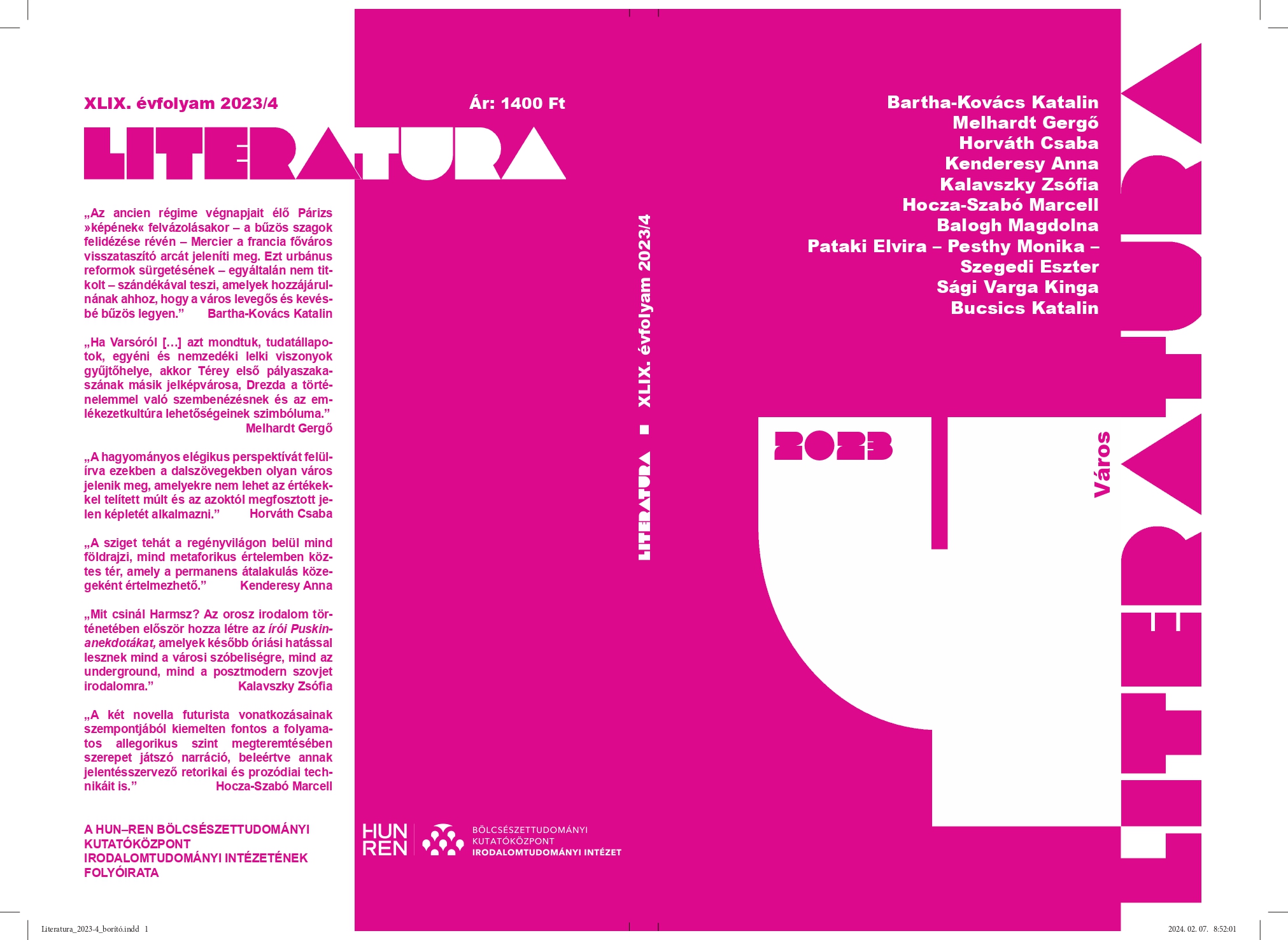Warsawa/Dresden
Városok és építészet Térey János 1990-es évekbeli költészetében
Absztrakt
A dolgozat az építészet és a városi tér ábrázolását vizsgálja Térey János első pályaszakaszában, az ezredfordulóig. Az életmű és az épített környezet megjelenítésének viszonyát irodalomtörténeti összefüggésekben elhelyező bevezető után a Térey-szövegek városképeinek értelmezését adja, három paradigmát különböztetve meg: (1) a kilencvenes évek vizionáriusnak nevezhető eljárását, amelyben a nagyváros felkavaró, átmeneti, a személyiség kibontakoztatása szempontjából azonban inspiráló tér; (2) az ezredforduló környéki időszak műveit, ahol a város társadalmi problémaként jelenik meg, és előtérbe kerül a romszerűség és épületek elpusztításának kérdése; (3) a 2000-es évek második felétől kezdődő szakaszt, amelynek városábrázolásai az egyéni és társadalmi emlékezet összefüggéseire helyezik a hangsúlyt, az épületek történetének archeológiai feltárása az önmegértés és a közösségi múltfeldolgozás eszköze; ezek ábrázolása egyre inkább örökségvédelmi, bölcseleti irányú. A tanulmány közelebbről az első két paradigmát vizsgálja: elsőként A természetes arrogancia és A valóságos Varsó, majd a Drezda februárban és a Paulus városábrázolásait (Varsót és Drezdát mint két kitüntetett szerepű várost), történelem és identitás, pusztítás és építés összefüggéseinek eltérő mintázatait értelmezve.



